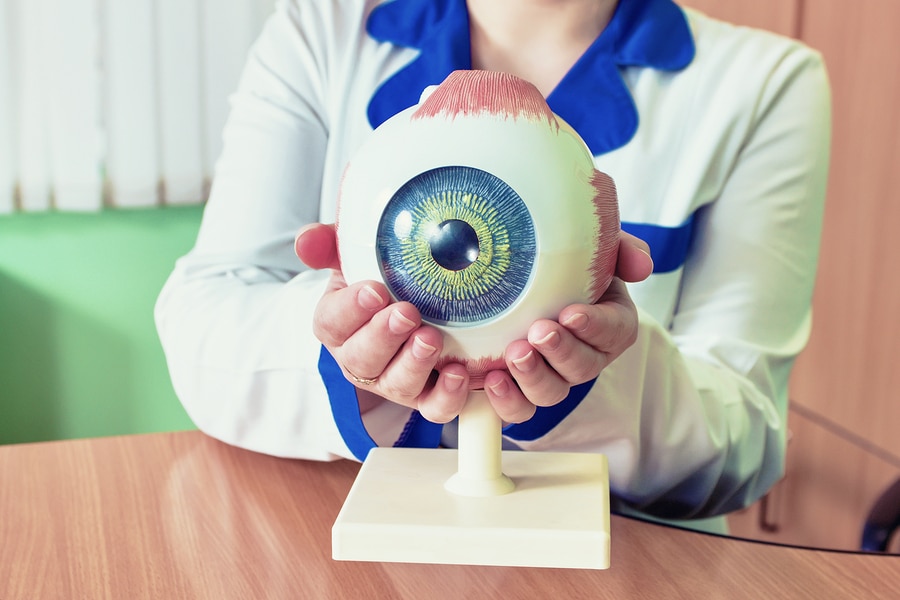If you’re in your 40s, 50s or beyond, you might be wondering about cataracts. You may remember your parents’ or grandparents’ cataract surgery and be curious about your own eye health. You might even be asking the question, “Does everyone get cataracts?”
The facts are these: Your risk of being diagnosed with cataract increases with each decade of life. By age 65, at least half of us will be affected by cataracts to some degree. The World Health Organization reports that approximately 100 million eyes are affected by cataracts across the globe. If we live a long life, most of us will develop an age-related cataract at some point.
Cataracts are a natural part of the aging process and as life expectancies increase, more and more among us can expect to be diagnosed with an age-related cataract in our lifetime. So what exactly is an age-related cataract? Are there other causes? How are they detected? How are they treated? Read on for the answers to these questions and more.
1. Age-related cataracts
A cataract is a cloudy area in the eye’s lens (normally transparent whose job it is to focus images onto the back of the eye). Age-related cataracts typically refer to cataracts that are caused by changes in proteins found within the lens. As we age, these proteins can start to break down and clump together, forming the cloudy area known as a cataract.
Many cataracts first appear when we are in our 40s or 50s, but because they progress very slowly, they often don’t begin to affect vision until sometime after age 60.
The odds of developing a cataract at some point are high. However, the degree to which cataracts interfere with vision varies from person to person.
2. Other causes of cataracts
In addition to the natural aging process, cataracts can develop from other causes. Injury to the eye or previous eye surgery can change the tissue that makes up the eye’s lens and can cause a cataract to form. Inherited genetic disorder medical conditions, such as diabetes, or long-term use of steroid medications may also be causes. It’s also possible to be born with cataracts. This condition is known as a congenital cataract.
Certain lifestyle choices, such as smoking or exposure to ultraviolet rays, can increase the risk of developing a cataract. While there is presently no known method for preventing cataracts, minimizing risk factors may delay their onset.
3. Cataract Detection
So how do you know if you have a cataract? While at first cataracts are typically small and have little effect on vision, over time, as they progress, you may begin to notice that things look a little blurry. Some describe it as cloudy, much like looking through a dirty car windshield. Colors may appear faded or dim, and double vision is possible. Night vision may also be affected, making activities such as driving after dark difficult and potentially unsafe.
Experiencing symptoms such as these may indicate that you have a cataract, but the only way to know for sure is to get an eye exam by a qualified eye doctor. Your eye doctor will examine your eyes with a microscope known as a slit lamp to see the lens as well as other parts of the eye. He or she may also dilate your pupils to examine the back of the eye where the retina and optic nerves lie.
4. Cataract Treatment
Treating a cataract depends largely on how much it interferes with your vision. At first, no treatment may be necessary. Changing eyeglass prescriptions and increasing light to perform activities, such as reading, may help manage the symptoms of cataracts. But eventually, when a cataract interferes with your ability to perform day-to-day activities, eye doctors usually recommend cataract surgery.
Cataract surgery involves removing the eye’s cloudy lens and replacing it with a clear artificial lens known as an intraocular lens or IOL. It’s one of the most common eye surgeries performed today. Fortunately, the surgery usually only takes about 15 minutes. Depending on the lens you choose, you may be able to reduce your dependency on reading glasses after surgery.
5. The IC-8 lens Advantage
If you’ve been diagnosed with a cataract, talk to your doctor about cataract surgery and your replacement lens options. The IC-8 small aperture lens offers many advantages over traditional monofocal and multifocal IOLs. It is designed to provide a natural range of vision from near to far, including mid-range vision needed to read a computer screen and may increase your freedom from glasses. With the IC-8 lens, one may achieve continuous and seamless vision at all distances. Learn more about the IC-8 lens.
References/ For more information:
https://www.who.int/blindness/causes/priority/en/index1.html
https://www.hopkinsmedicine.org/wilmer/conditions/cataracts_faq.html



